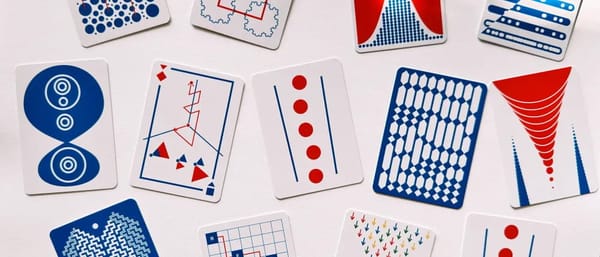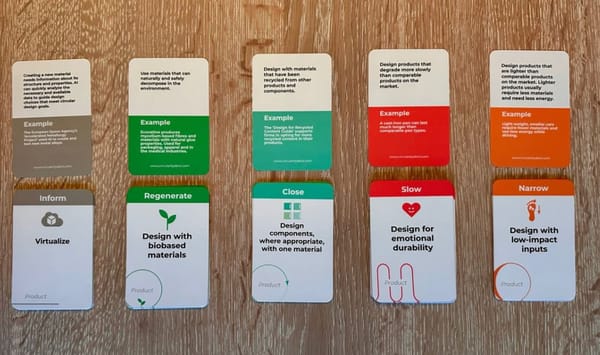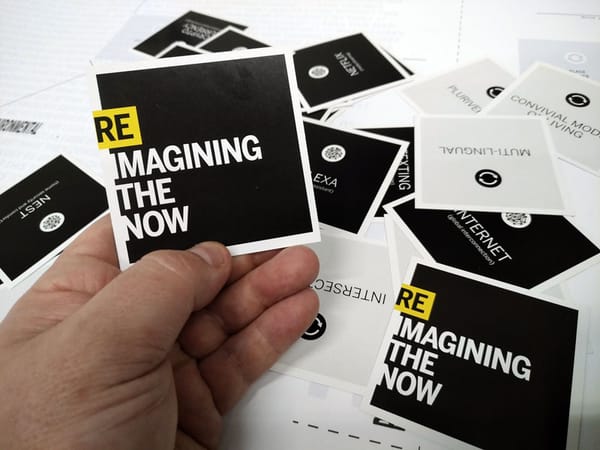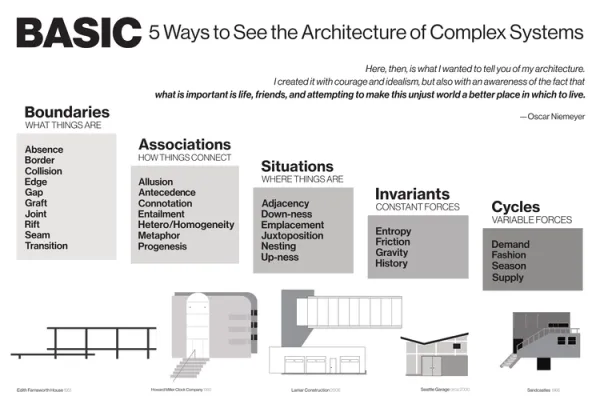№ 100 | ✨Special Edition:✨ A Look Back at 99 Issues of Thinking Things
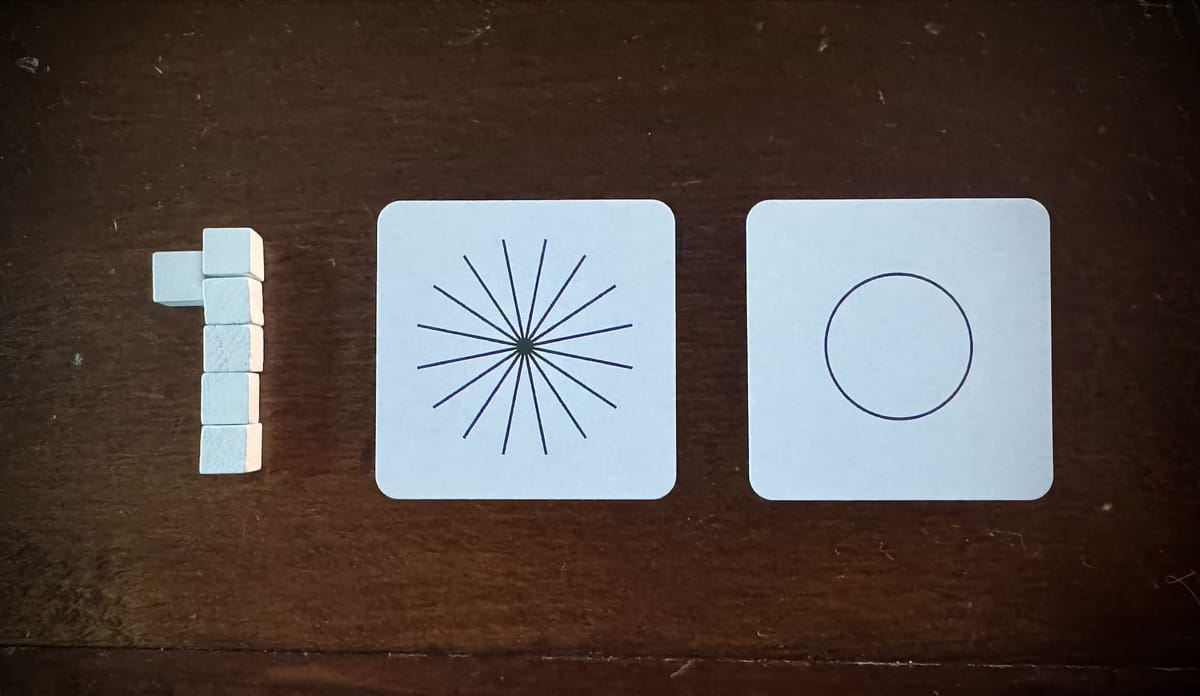
Welcome to a rare clip show edition of the Thinking Things newsletter. You can read my rambling preamble, or skip down to this special super-charged selection of thinking things!
One reason I maintain this newsletter is to…
- Share examples of
- Spark interest in
- Inspire the creation of
…playful things to think with.
From a cognitive perspective, I’m interested in…
- actual things (preferably tangible things, though digital is welcome, as well as powerful concepts like metaphors),
- we interact with,
- to create understanding.
And if it sparks joy—even better!
Of course, what exactly defines a playful thing to think with is… rich and varied.
One of the joys of curating the past 99 issues (!!) has been the chance to explore the breadth and depth of what is a playful thing to think with.
Cards are of course a good archetype to point to, which is why nearly every issue will include reference to some professional card deck. But there are also metaphors, visual frameworks, games, simulations, questions for reflection, and other things that arouse our senses and illuminate difficult concepts.
Since beginning this newsletter 3 years ago, I’ve shared more than 500 examples of playful things to think with. For each issue, I typically save dozens of links, of which only the top 5-7 selections make it into each issue of Thinking Things. And in this process I’ve stretched the boundaries of what I would have thought to include…
- Quilts as things to think with?
- A data visualization using light?
- Short films as things to think with?
Another, admittedly selfish, reason I maintain this newsletter is it’s become a useful way to quickly refind those things I find myself sharing with others. One of the criteria for inclusion is “will I find myself talking about this later on?” With increasing frequency, I find myself referencing something I’ve shared here.
Another, closely related reason for inclusion, is because it’s something I can’t stop thinking about. A novel approach to things. A challenging perspective. Something I’ve incorporated into my daily thinking.
✨ Which leads us into this special 100th issue of the Thinking Things newsletter.✨
I wanted to take this time to look back on some of the things that I still think about, or find myself referencing—even if it hasn’t been mentioned in a few years. Yep, it’s the newsletter version of a TV clip show. But only sort of. This is the curators curation. The best of the best, if you will. Only things that merit a 2nd, if not 3rd or 4th look. My first pass at this edition was to start with a blank page, and list—from memory—all those things I’d want a new reader of this newsletter to know about. And since many of you signed up within the last year, there’s an entire backlog of hits waiting to either be revisited or visited for the first time! I’m saving you the time of going through the backlog… 🤪
With that, on with the show…
A Look Back…
While a ‘Top 10 List’ would have been nice (and much, much easier to pull together!!), I couldn’t pick just ten things. But, the stuff I selected did fall into ten buckets, or themes. So, in no particular order, here’s a round up—by theme—of some of the most memorable and intriguing playful things to think with:
One disclaimer before we get started:
You know that annoying thing where you’re reading a review of the new XP-38 sport speeder, and you click on the link expecting it to take you to the source material, but it doesn’t. Instead, you land deeper within the site you’re already on? 😠 Yeah, I hate that too. But, expect that with this roundup. You’ll be routed to the original newsletter post where I first shared that find.
Why not link directly to the thing being described, as usual? Well… I have put just a wee bit or work into my commentary over the years—I’d like to think it’s something of a value add. Yes? Hopefully? Anyway… You’re only two clicks away from the source. Also, this meandering path may expose you to other interesting things I didn’t include in this roundup.
Enjoy the journey!
With that out of the way, let’s get on with the show…
THEME 1: Analog Wizardry!
While I have a bias for the analog qualities of board games, card decks, and so on, I was enamored by these mind-blowing examples that push the limits of what can be done with just a bit of paper and ink. Correction: Paper, Ink, and a LOT of ingenuity and computational thinking.
From Issue № 43 we have Hexaflexagons, which are… a folded paper contraption that keeps unfolding to reveal new and unexpected panels. Hard to describe. You have to see them to believe them!
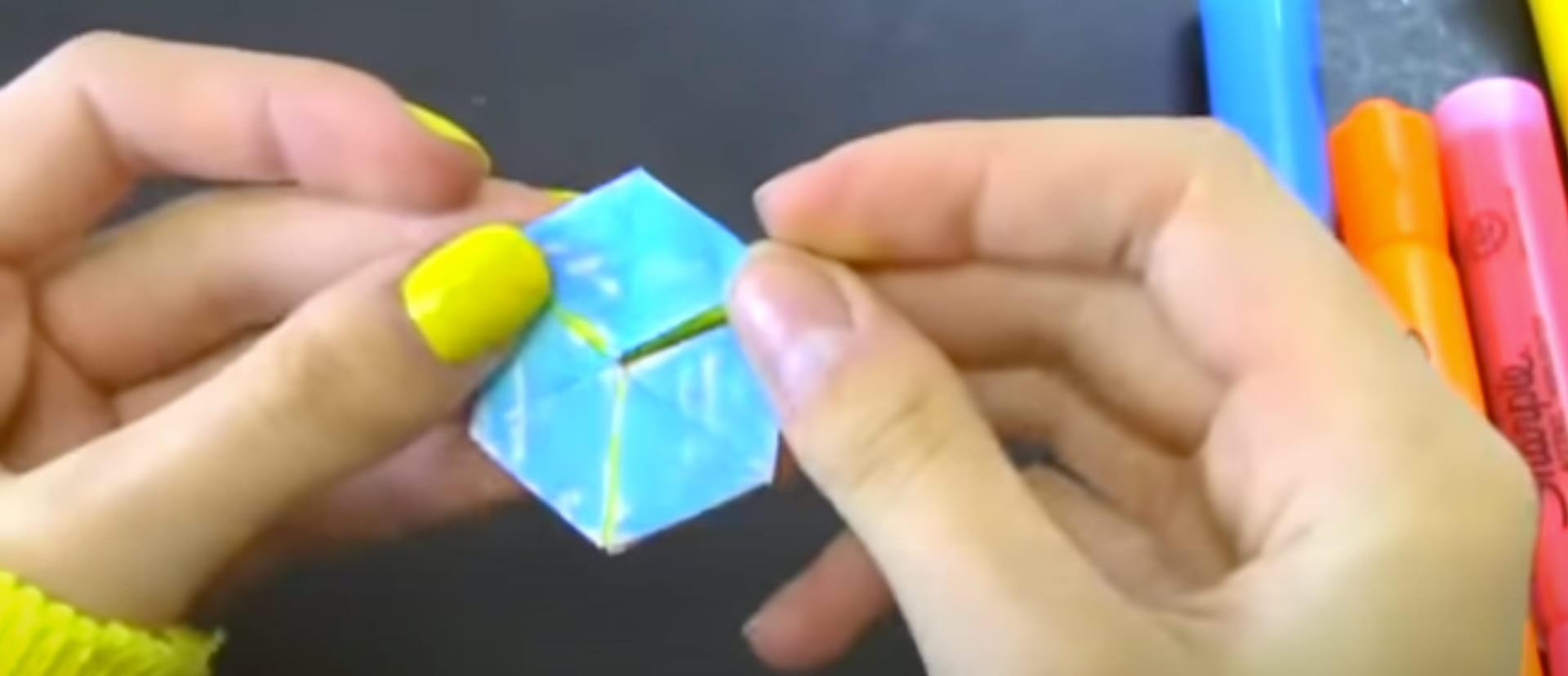
[ 📺 Note, the videos linked to in that post no longer work, but… thanks to the hard and invaluable work by The Internet Archive, you can still view the two videos I shared: Part 1 and Part 2.]
Much later in Issue № 64, I shared Edge-Notched Cards, a kind of queryable database...made of paper! Yes, you read that right: A queryable paper database.
Just a few issues later with Issue № 68, I shared the Ace of Aces, a kind of ‘Choose Your Own Adventure’ first-person shooter from 1980… using a pair of picture books to recreate a WWI aerial dogfight. While the gameplay may be straightforward, it required working out complex mathematical algorithms, all of which are explained in the referenced post.
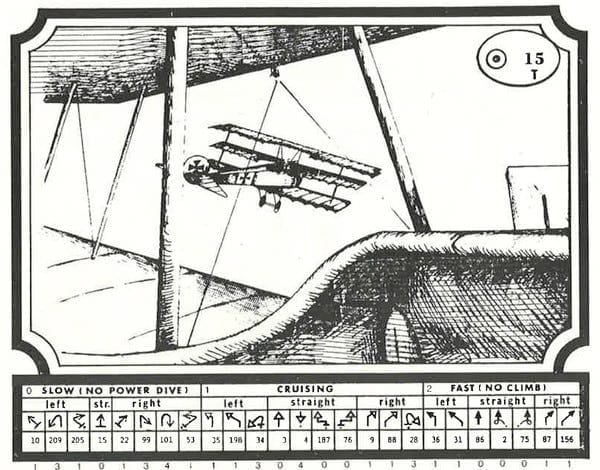
THEME 2: Card Decks (and ‘Proto’ Card Decks)
As you’d expect, I’ve shared a large number of card decks. At this point, what catches my eye are what I’d call “playable decks”—card decks that use interesting patterns, can be combined in novel ways, or try to be more than just a “reference deck” (a laundry list of similar items). Of the card decks I’ve shared, these stood out for me:
The Hexi kits, shared in Issue № 69, could easily have been yet another reference deck of methods; instead, these are so much more. Designed for teams to discuss their unique ways of working, the hexagon shape, combined with a flexible classification system, and partnerships with groups like Scrum.org, create something unique: A flexible platform for organizing and facilitating team processes, and adjacent considerations.

Speaking of hexagon shaped card decks, I later devoted an entire issue to the topic: № 90 | A Thinking Things ✨Special Edition:✨Hexagon Card Decks!
While not a card deck per se, in Issue № 29 I adapted the 37 prosocial patterns from Daniel Cook’s paper on Kind Games into a kind of ‘proto’ card deck. Looking back, these ideas really should be turned into a card deck, or some kind of toolkit to make these ideas more actionable… 🤔

With Issue № 72, I shared the GenAI card deck, which is a great orientation to a great number of AI concepts and considerations. I later had a chance to attend a workshop by the card creator Alexandre Eisenchteter, where in addition to sharing a handful of ways the cards could be used, challenged us (a small group of mostly facilitators) to create more ways the cards might be used. I love that invitation and that he’s taken on the hard work of organizing these concepts.
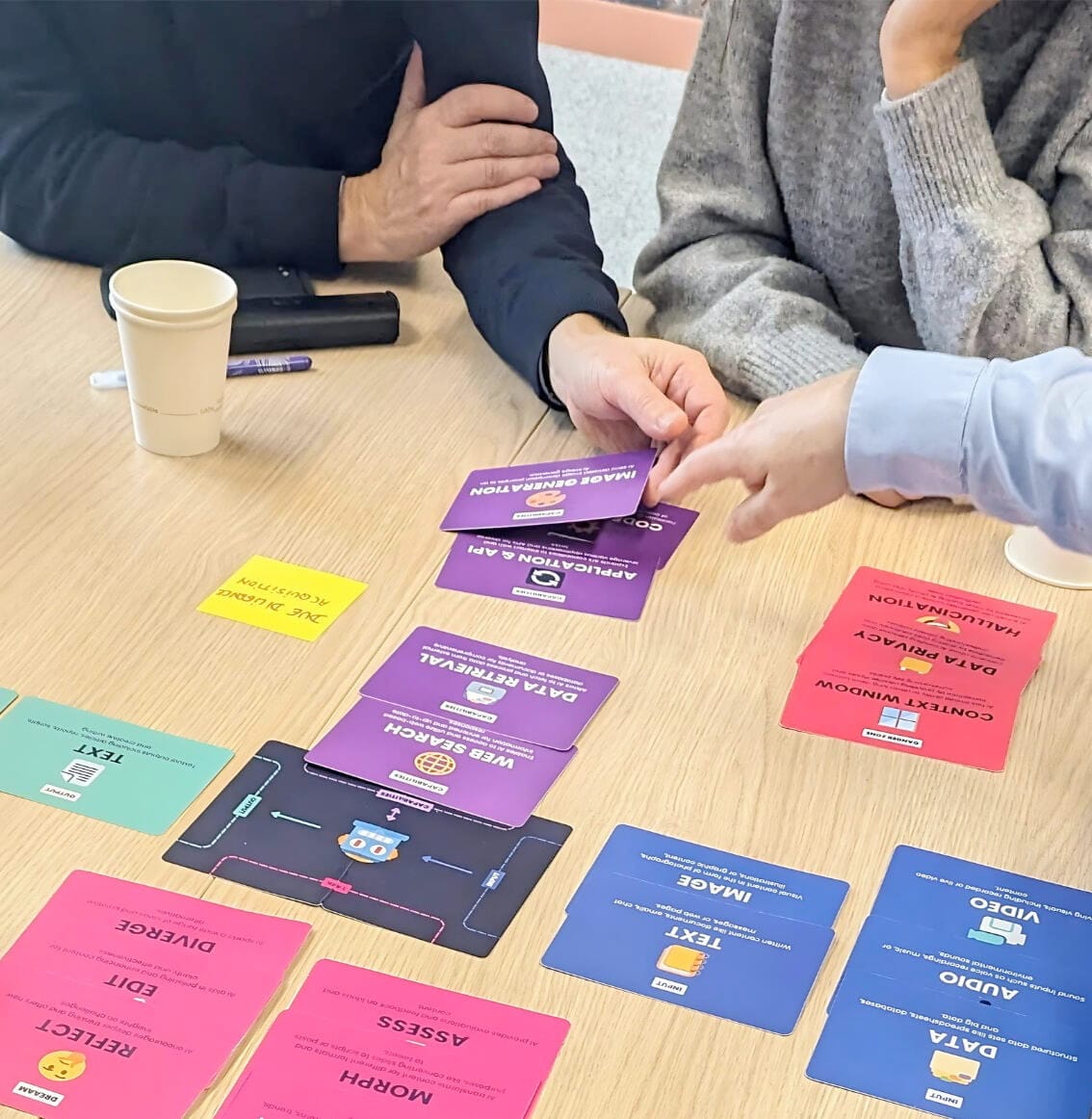
I still find myself thinking about the Flipspark card deck shared in Issue № 88. Designed for studio musicians, the deck uses a number of simple but interesting card patterns to create unique challenges.
And finally…
Dave Gray’s Visual Frameworks card deck. I got an early preview of these while they were still in development, and was eager to promote them (Issue № 54) once they hit Kickstarter. I’ve gone on to purchase several copies that I use in my Visual SenseMaking workshops.
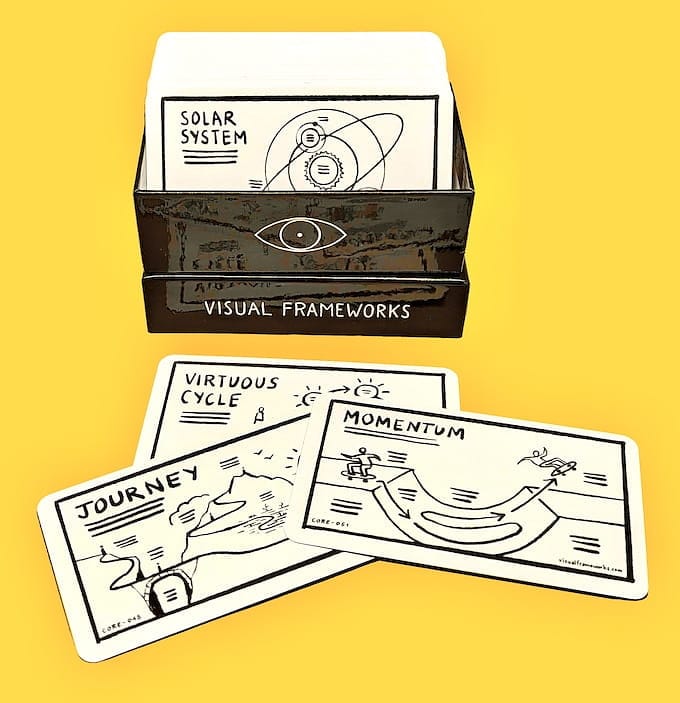
THEME 3: Games for Climate Change!
Of the many topics to think about—and encourage people to meaningfully understand (and take action on!)—climate change easily makes the top 10. These three games throw players into the center of a highly complex situation, and let them play out various scenarios, to see what works, or doesn’t work.
No surprise, two of these are board games.
First, the highly popular game Daybreak (shared way back in Issue № 6). Co-designed by the same designer as Pandemic, this game requires players to work together to prevent a climate catastrophe. Despite the hopeful name, it is a HARD game to win.
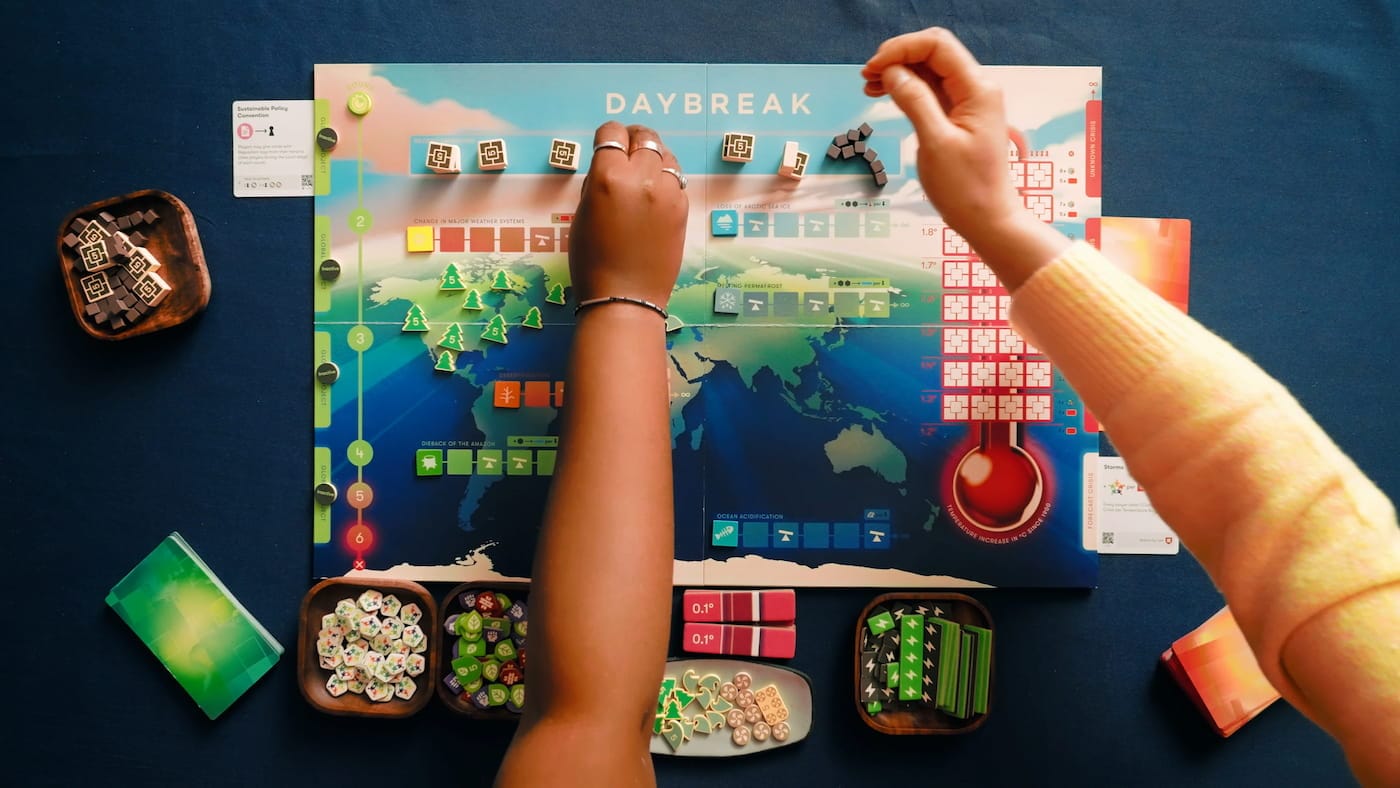
On a more local level, in Issue № 21 I referenced two different board games that were being played by Hawaiian residents as a way to facilitate difficult conversations around how their communities might respond to climate change.
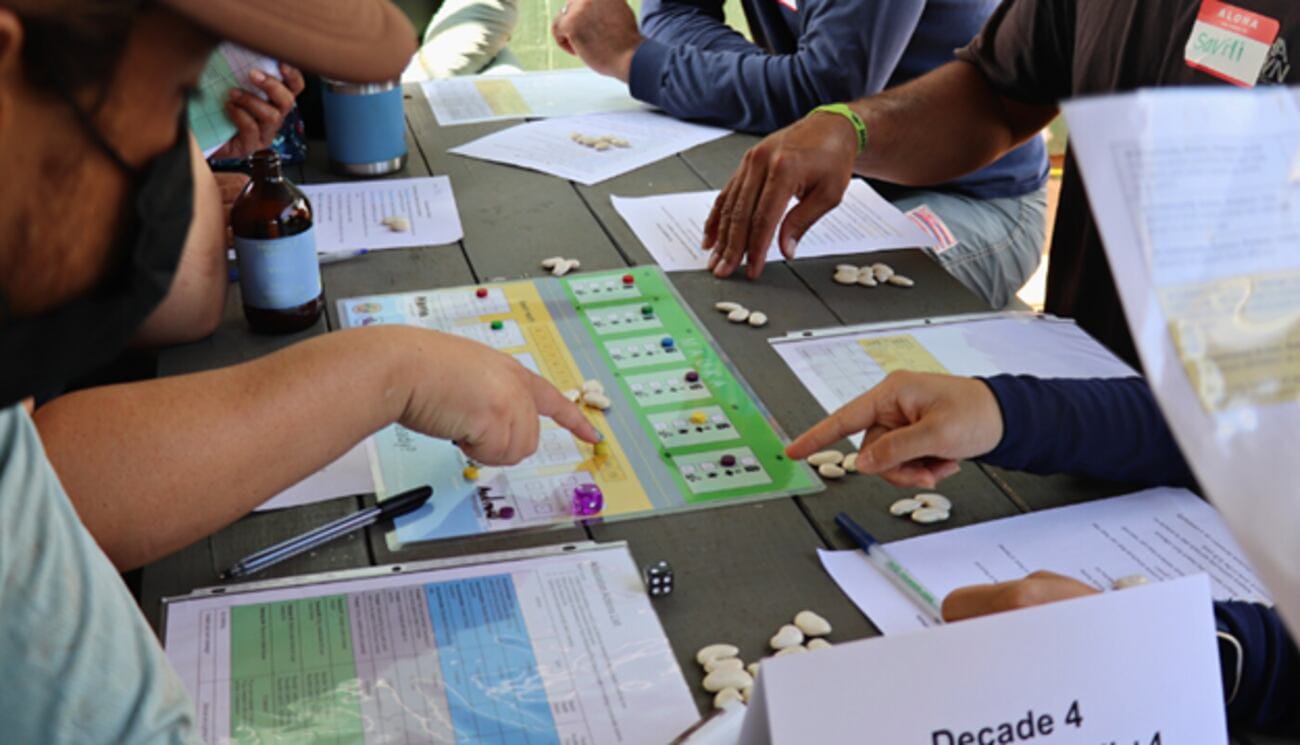
And lest we forget the power of a good bit of interactive fiction, Half-Earth Socialism (shared in Issue № 63) remains a great introduction to the breadth of political, economic, and social considerations a leader has to make in service to the common good.
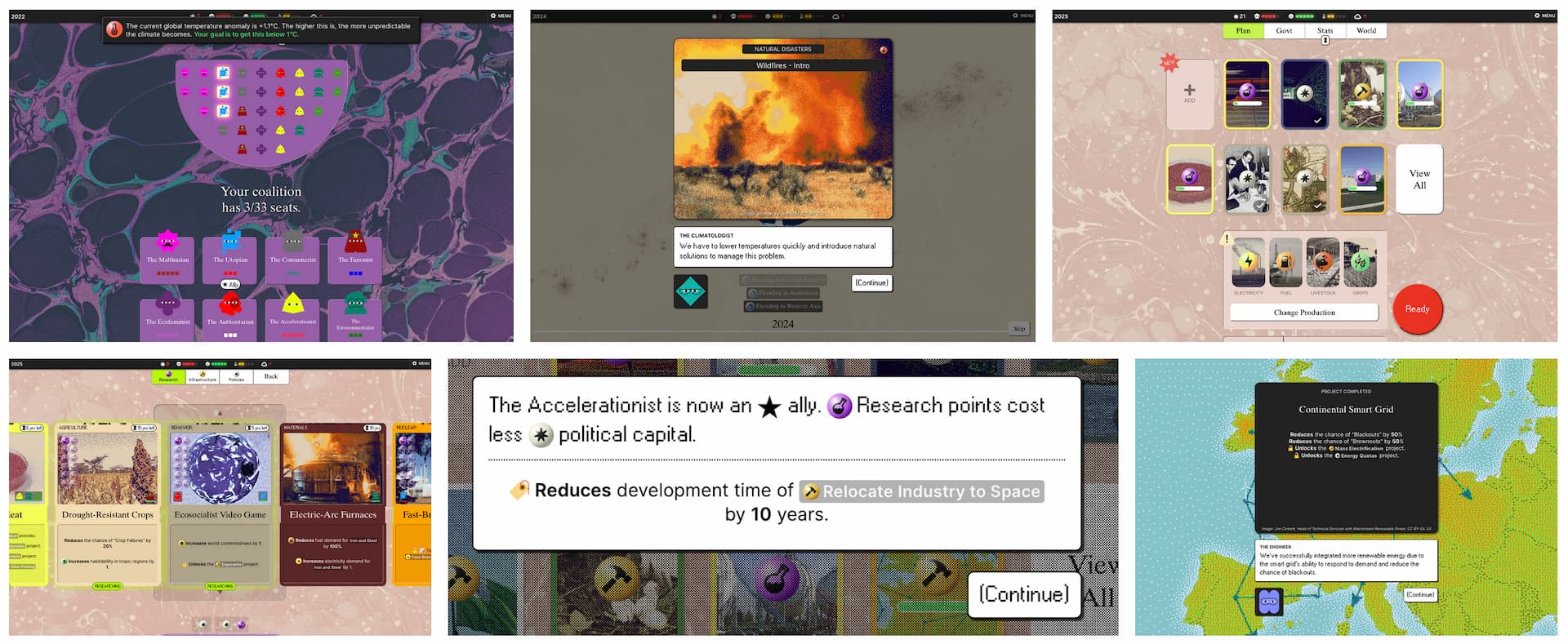
THEME 4: New-To-Me Ideas That Stuck
Over time, we all pick up new ideas, concepts and phrases. Sometimes it’s a new perspective. More often it’s a new phrase or framework. A side-benefit of sharing these in the newsletter is that I now have a record of when I first encountered these (now familiar and taken for granted) things.
The AAI framework (Issue № 27) is something I’ve found myself citing a lot, if only because it’s overshadowed by the seemingly ubiquitous RACI/DACI formats. But, if you’ve not had luck with these “who is responsible for what?” frameworks, give the AAI framework a glance, as it was created in response to problems with RACI/DACI.

The next thing is a widely circulated speech by Ursula K. Le Guin, in which she makes a passionate defense of art over profits.
Oh, and this acceptance speech is the origin of her famous quote on capitalism:
We live in capitalism. Its power seems inescapable. So did the divine right of kings. Any human power can be resisted and changed by human beings.
In no particular order, and without commentary (click through to the issue to get my commentary!), here are other ideas that have stuck with me:
- Using hexagons for Skill Trees. Issue № 53
- Discovering a word to describe something we’ve all experienced: Type 2 Fun (Issue № 25)
- 21st Century Economics (Issue № 70) and Adventure Playgrounds (Issue № 88)
- How a simple turn of the phrase can make all the difference: ‘Do Quests, Not Goals’ (Issue № 77)
- A new way to prioritize: Even/Over Statements (Issue № 74)
- And… “Communal Bonfires” (Issue № 60). I think of this post with every discussion of community software. Especially the—now obvious—distinction between a group chat and a forum.
Speaking of Kings and more enlightened ideas…
THEME 5: Political
While you can likely identify my political leanings by the content of what I share (and my commentary, for that matter), I do try to avoid certain phrases, names, and labels. Why? Identity politics are powerful; using certain words are a fast way to end a conversation (or worse, create superficial conflict). I’d rather hold space for dialogue and reflection—around ideas, beliefs, and values. Some people are activists and protestors. I’m a teacher, facilitator, and SenseMaker; this is my role. I’d rather engage critically with ideas and leave people—myself included—wrestling with their beliefs and perspectives.
That said, these three posts are the closest I’ve come to political topics.
First, this hypothetical proposal, from the 2020 US presidential election: What if America had 6 political parties, instead of 2? (Issue № 82). Oh, add there’s a 20 question test that “places” you into one of these 6 parties.

In Issue № 83, I shared the Stop Project 2025 project, for both the content and the format (using graphic novels to make content more accessible). The content… should frighten everyone, regardless of your political leanings.

The one article that has rattled around in my noggin for years now is…
👇
ONE difference between liberals and conservatives (Issue № 26).
☝️
While I’ve collected and/or shared a few such articles, this one stuck with me, if only because of the scale of the study and how they backed into their insight—the initial study wasn’t about this topic.
THEME 6: Short Stories to Think With
Not all short stories are necessarily a thing to think with. But, over the last few years, I’ve shared several stories, sci-fi and possibly satire, that definitely leave you thinking about critical issues.
- “The Year Without Sunshine” (Issue № 78)
- “Manna – Two Views of Humanity’s Future” (Issue № 61)
- “Better Living Through Algorithms” (Issue № 37)
While these stories vary in quality, they all leave your thinking, long after reading the last sentence.
THEME 7: Visual Models
Ever the Visual SenseMaker, I do love collecting new models, canvas, frameworks, and other kinds of conceptual maps to guide our thinking. Noteworthy models have included:
3 Styles of Play (Issue № 82) — this helped me dial in my thinking about distinctions made between role-playing games, goal oriented play, and narrative play.
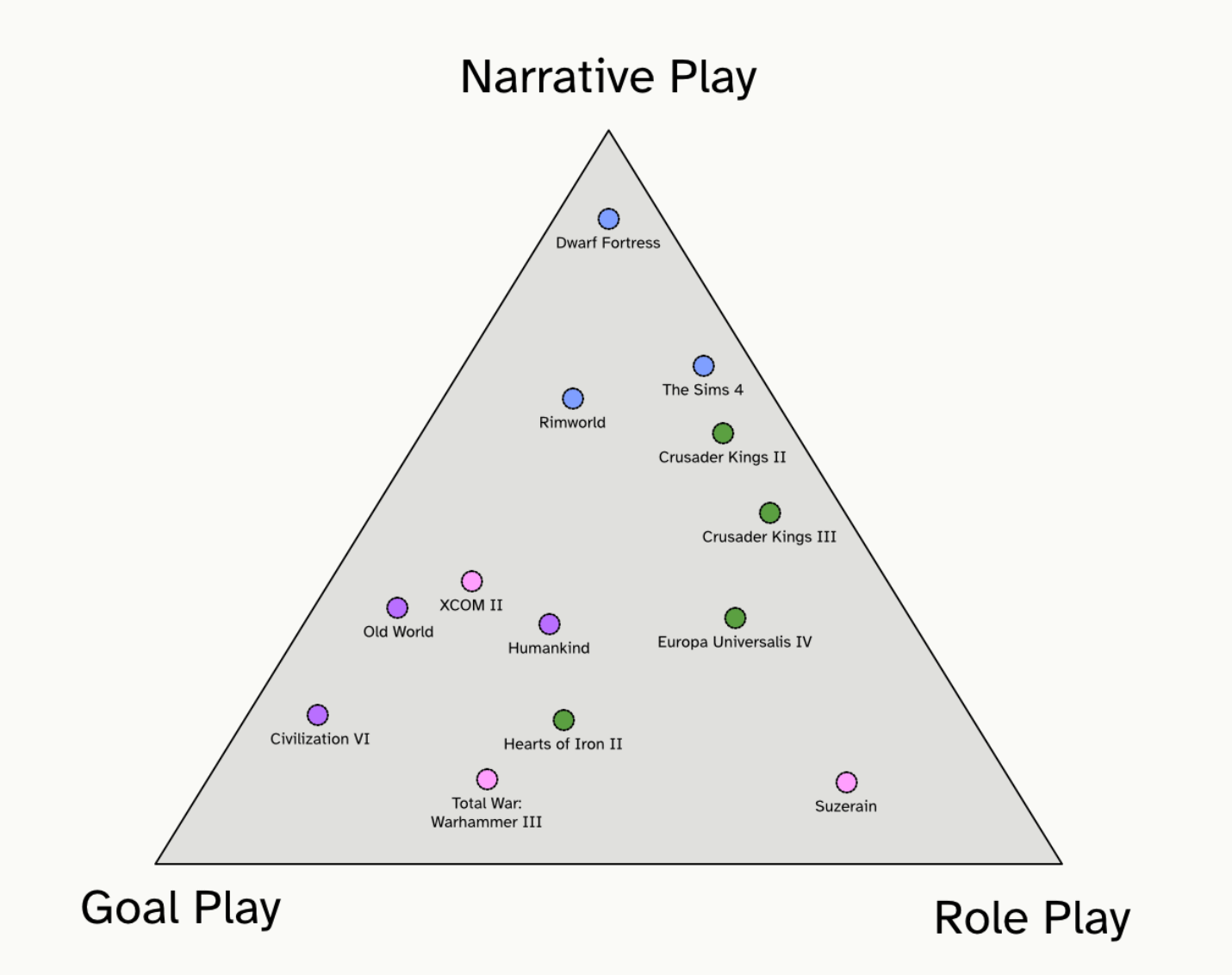
The Map of Board Games (Issue № 84) — It’s the great big map of everything! (Everything board games, that is.)
From Issue № 66 comes the Spinning Top Framework, a “metaphoric framework” you can use to “design for emergent learning.” Ever the fan of learning models, I find myself returning to this one frequently, as it’s quite good.
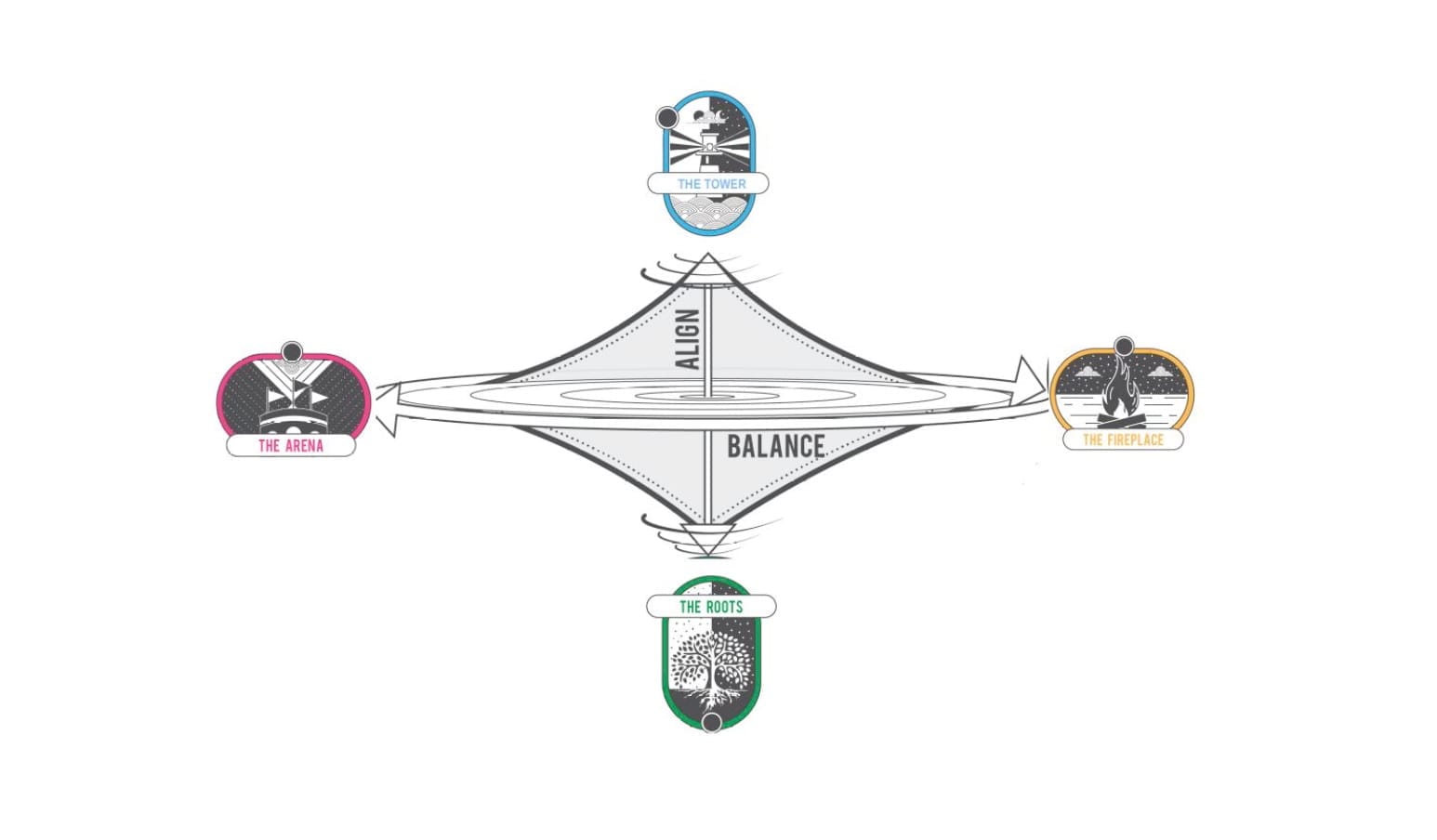
Issue № 79 kicked off with Competency Ladders. This framework by my friend Chris Stone is a great way to think about onboarding and product growth, especially for ‘horizontal’ software.
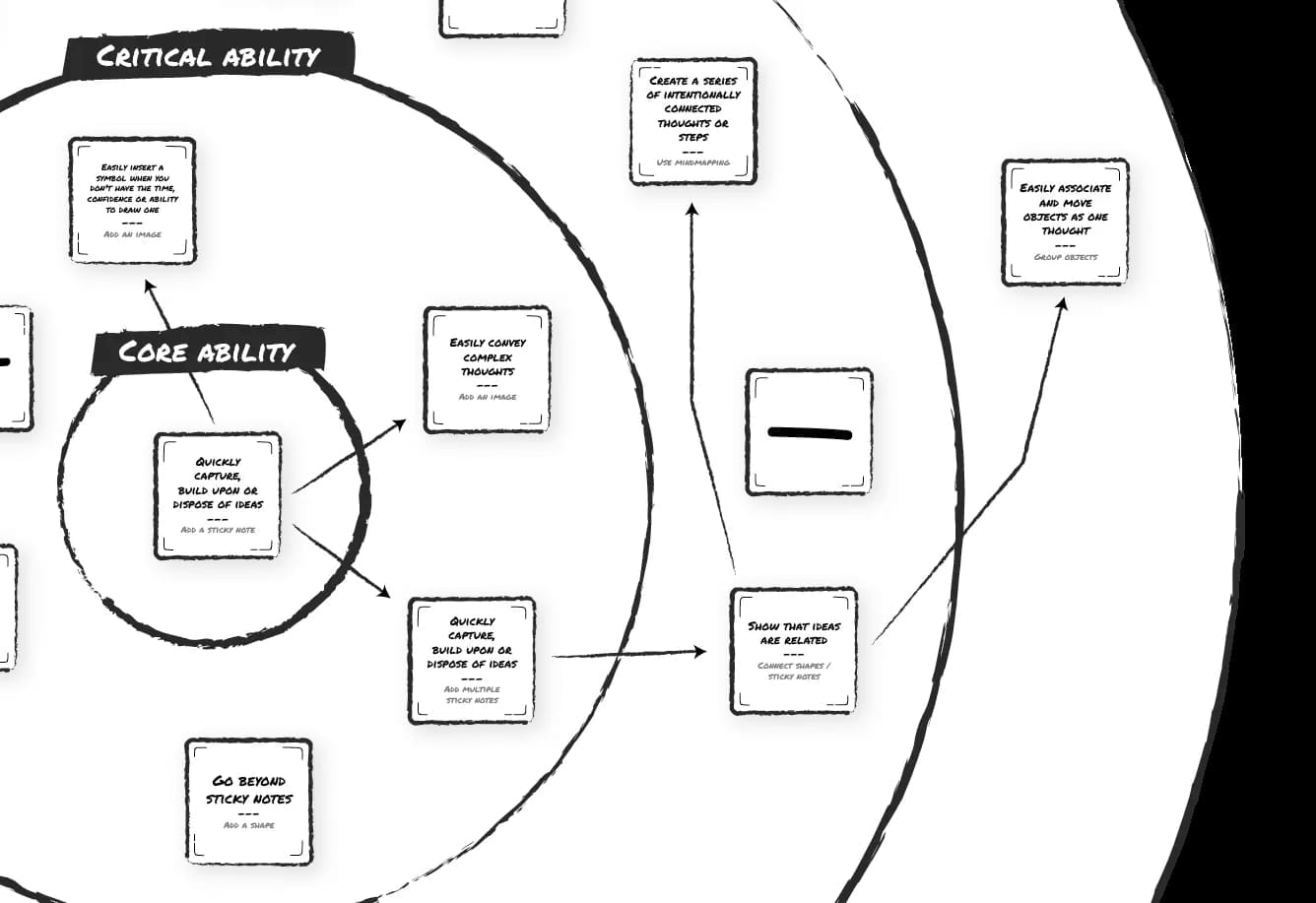
Way back in Issue № 19 I shared A Placeless Taxonomy, which has proven to be one of the best frameworks I’ve found for thinking about when to engage in synchronous and/or asynchronous work.
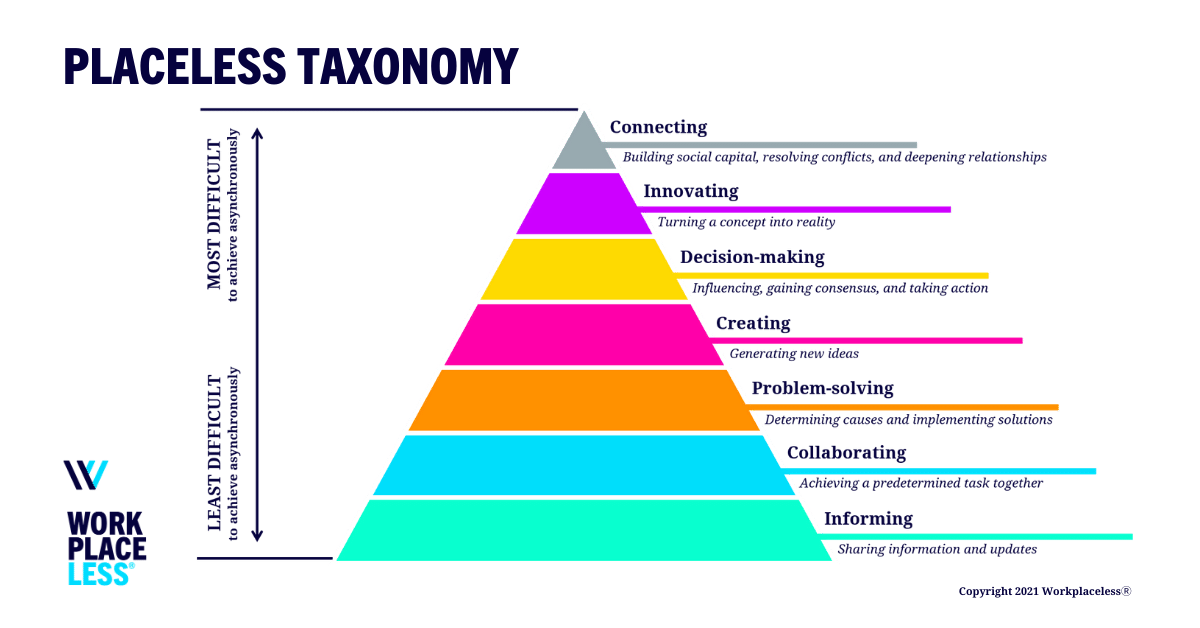
In Issue № 56 I mentioned how our ‘Spaceship Earth’ is at risk and shared this model depicting the 9 Planetary Boundaries—the processes needed to sustain life on Earth—and how we’re in the red for 6 of these. 😮😢😬

THEME 8: Challenging Conventional Thinking
It’s in the contradictions and the challenges to established thinking that I find the insights and ideas that make me think. Hence, on several occasions I shared view points that either cut against the grain of established thinking or challenged popular beliefs.
This critical thinking included taking a second look at what the Luddites (Issue № 47) were actually protesting (hint: it wasn’t the technology, necessarily).
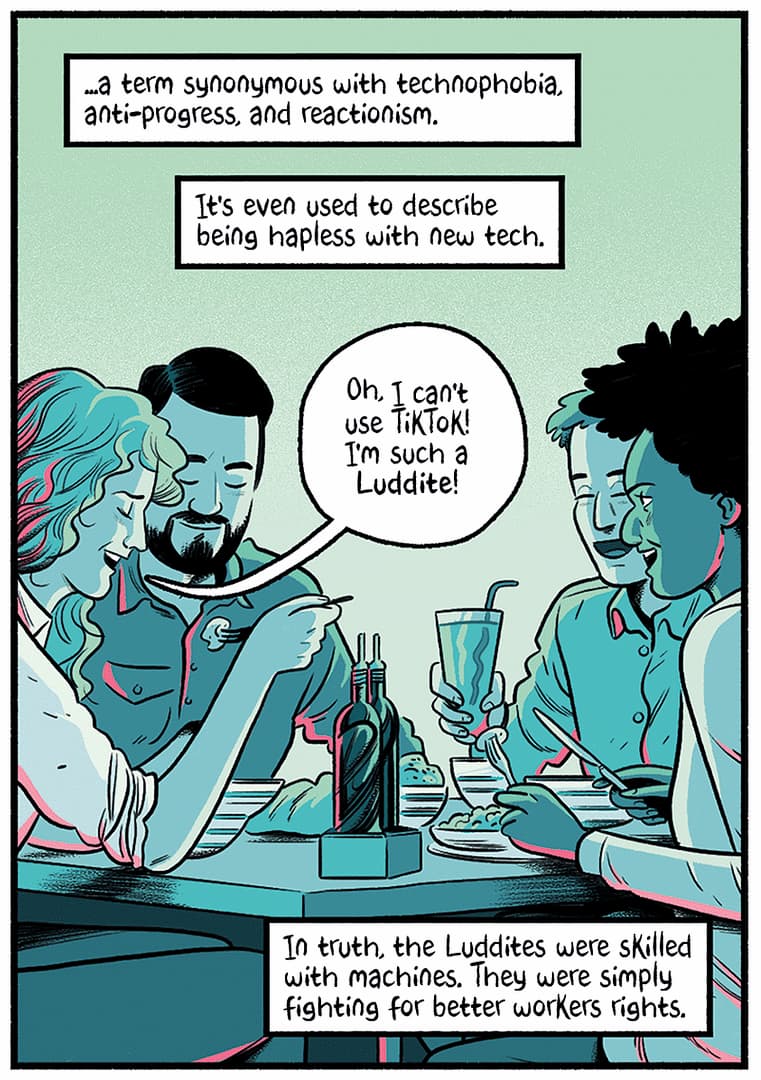
Also, you gotta love this quote from that same piece:
If your concept of "progress" doesn't put people at the center of it, is it even progress?
I took a “wait, what?!” long second look at the “Tragedy of the Commons” (Issue № 40). It turns out this essay about sharing common goods (how I was first introduced to this idea) is actually an “ecofascist” argument for the privatization of the commons by a select few in power. Yikes! Not to mention, the described “problem” has been debunked multiple times.
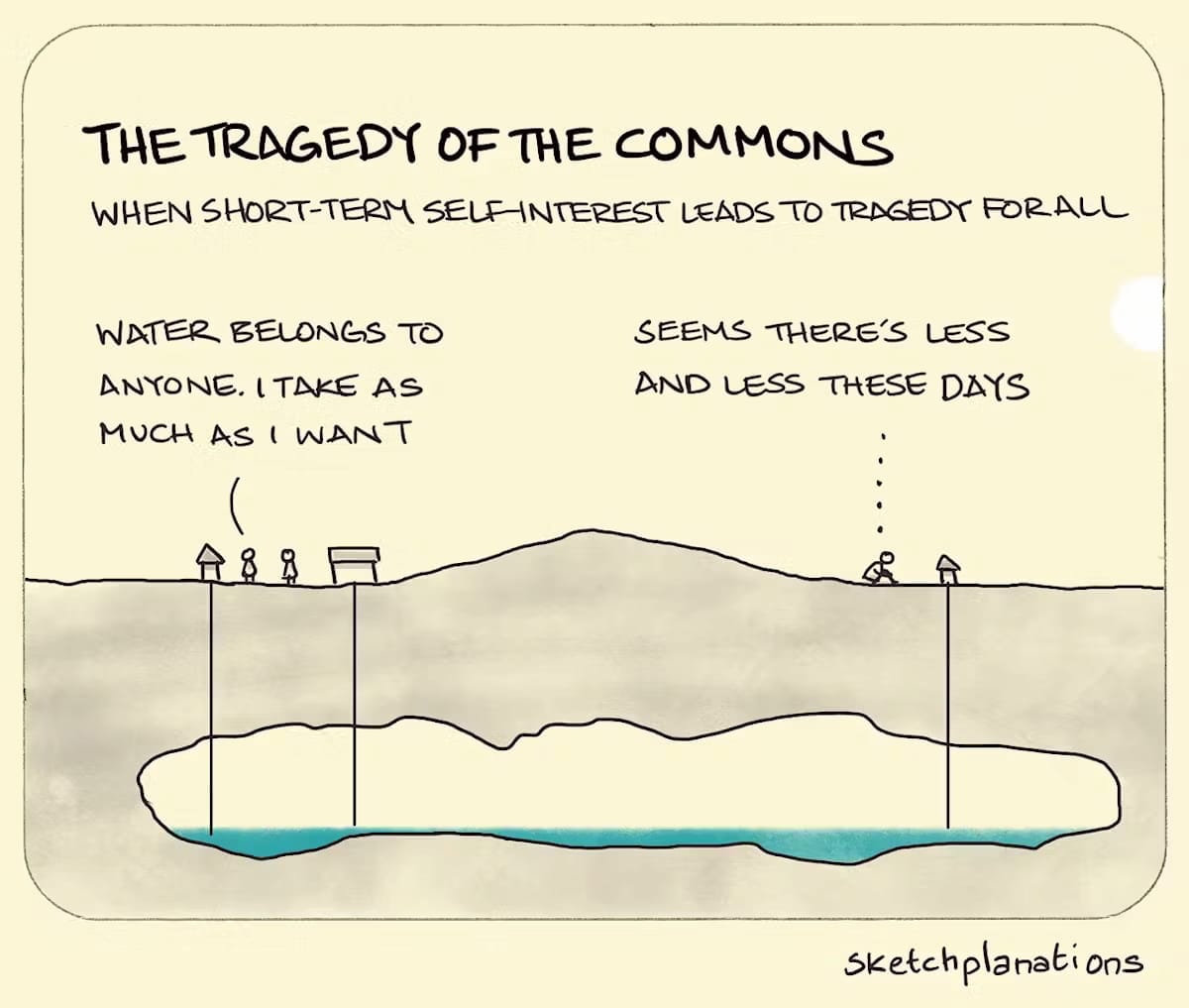
My friend James Royal-Lawson helped us take a look at the hidden curves of the Gartner hype cycle (Issue № 80).
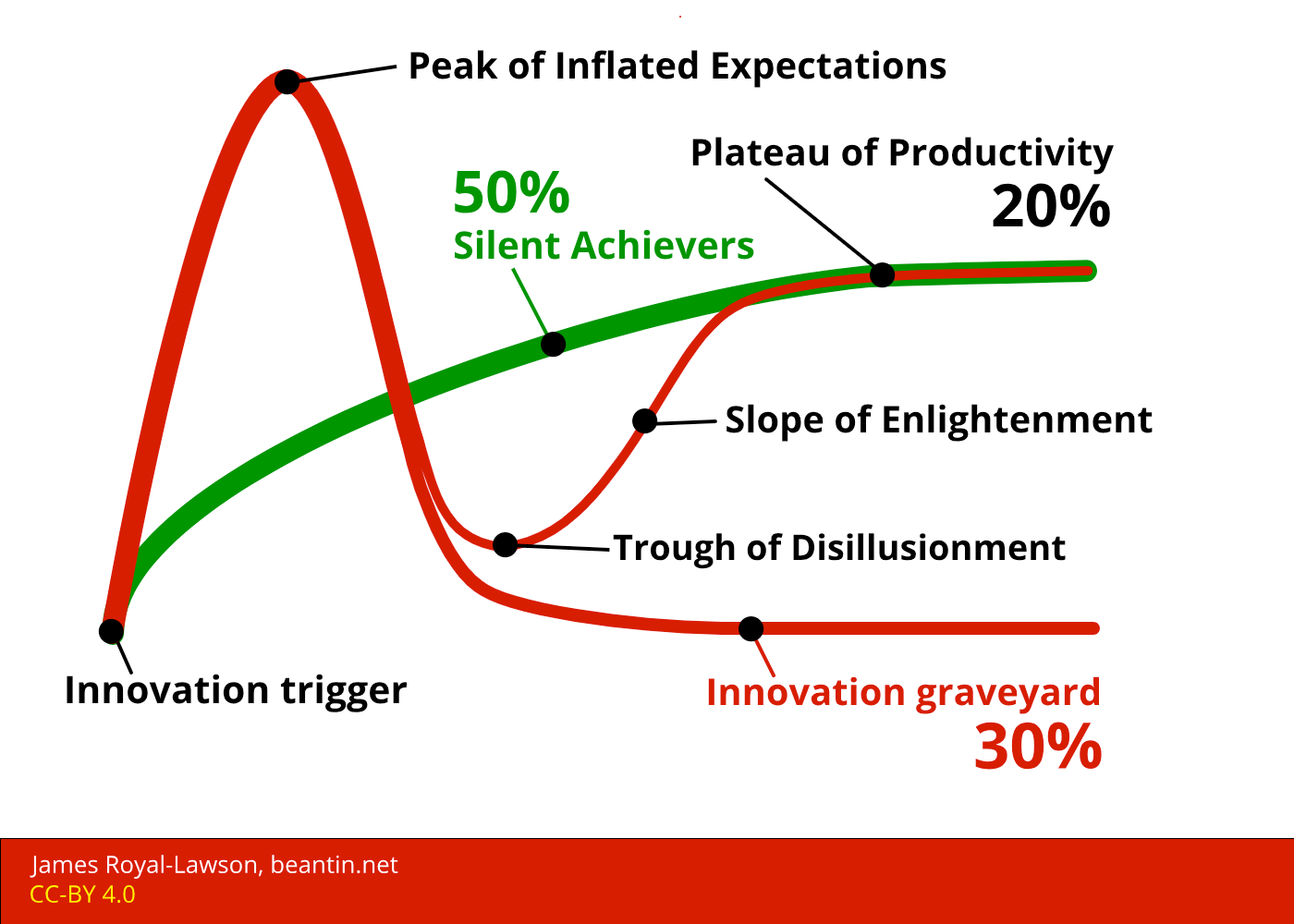
And of course, I’ve shared a number of challenges to the popular Hero’s Journey. The Hero’s Journey is nonsense (Issue № 50) and The Heroine’s Journey (Issue № 94). But, the one that stuck with me? A filmmaker looking Beyond the Hero’s Journey (Issue № 74), at other common narrative patterns that don’t exactly fit that pattern. His simple proposal?
When there’s a Change between the character’s External world and Internal world, this gap creates Conflict and a Choice to be made.
Looking at narrative in this way “dramatically widens the range of stories that can be analyzed” and reframes the Hero’s Journey as only one of 6 character arc patterns.
THEME 9: Playing with Bits (and Atoms)
For all my love of physical things, I’m also enamored by folks who push the bounds of how we might interact with digital information. Playful interactions and all that.
At the top of my list, and blurring the lines between bits and atoms, is all the stuff Bret Victor has been pioneering with Dynamicland. I shared “Communal computing for 21st century science” back in Issue № 40, as this was the first update I’d found—in some time—pertaining to Dynamicland. Fast forward to Issue № 78, and I shared the new Dynamicland website, which included a hefty roundup of supporting videos and documents, including many things I’d never seen before. This was followed a mere four issues later (Issue № 81) with this fabulous video on Thermodynamics cards where we see Dynamicland concepts blended with playing cards 😍. Then, there’s this more recent post from Issue № 95 where Bret Victor takes Dynamicland out of the lab and on the road (sort of) to talk about Computational Public Space.
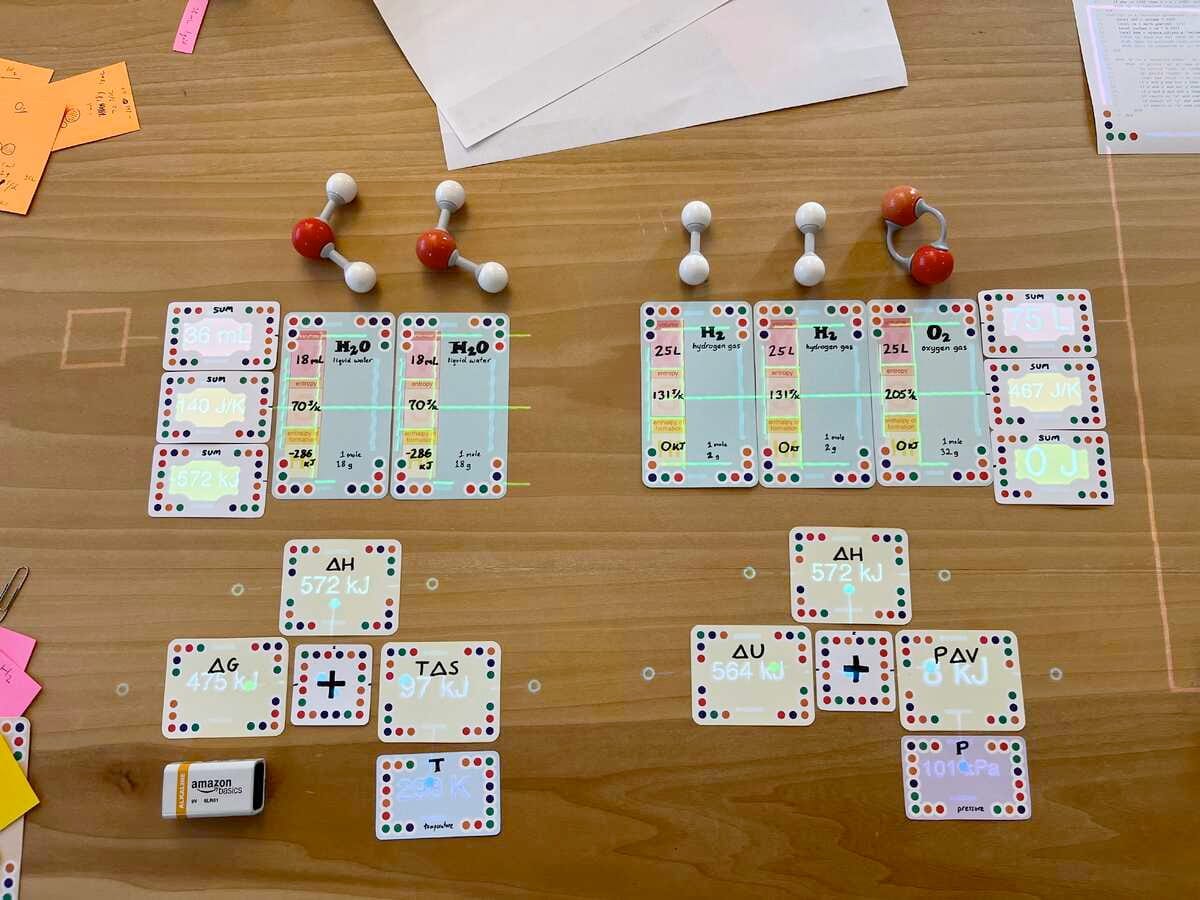
Of course I also love spatial canvases (think Mural, Miro, FigJam…). I’m quick to say there is still a lot of untapped potential for these digital whiteboards / infinite canvas tools (I may or may have not been working on such things during my time at Mural). While I am cautious about all the AI hype, I was excited when TLDraw computer was released (Issue № 86), as this shows one way we might use the digital canvas as an information substrate upon which to do computational things.
Again, blurring the lines between analog and digital, I try to follow the fine folks over at Ink & Switch. Way back in Issue № 15, I shared one of their projects exploring programmable sketches, which asks: What would be possible if hand-drawn sketches were programmable like spreadsheets?’

Finally, I regularly share some kind of interactive web page, or explorable explanation. With so many to choose from, I’m going to pick one that stands out in my memory, the Space Elevator (Issue № 34). Honestly though, you should just go check out everything from Neal.fun.

THEME 10: Playful Spaces to Think With(In)
While this newsletter is ostensibly about Things to think with, I have, from time to time, also included articles discussing spaces to think within.
Most recently, I shared The Eudaimonia Machine (Issue № 93), a way to design office spaces to support different kinds of work.

There was a post on Montessori Architectural Patterns (Issue № 57).
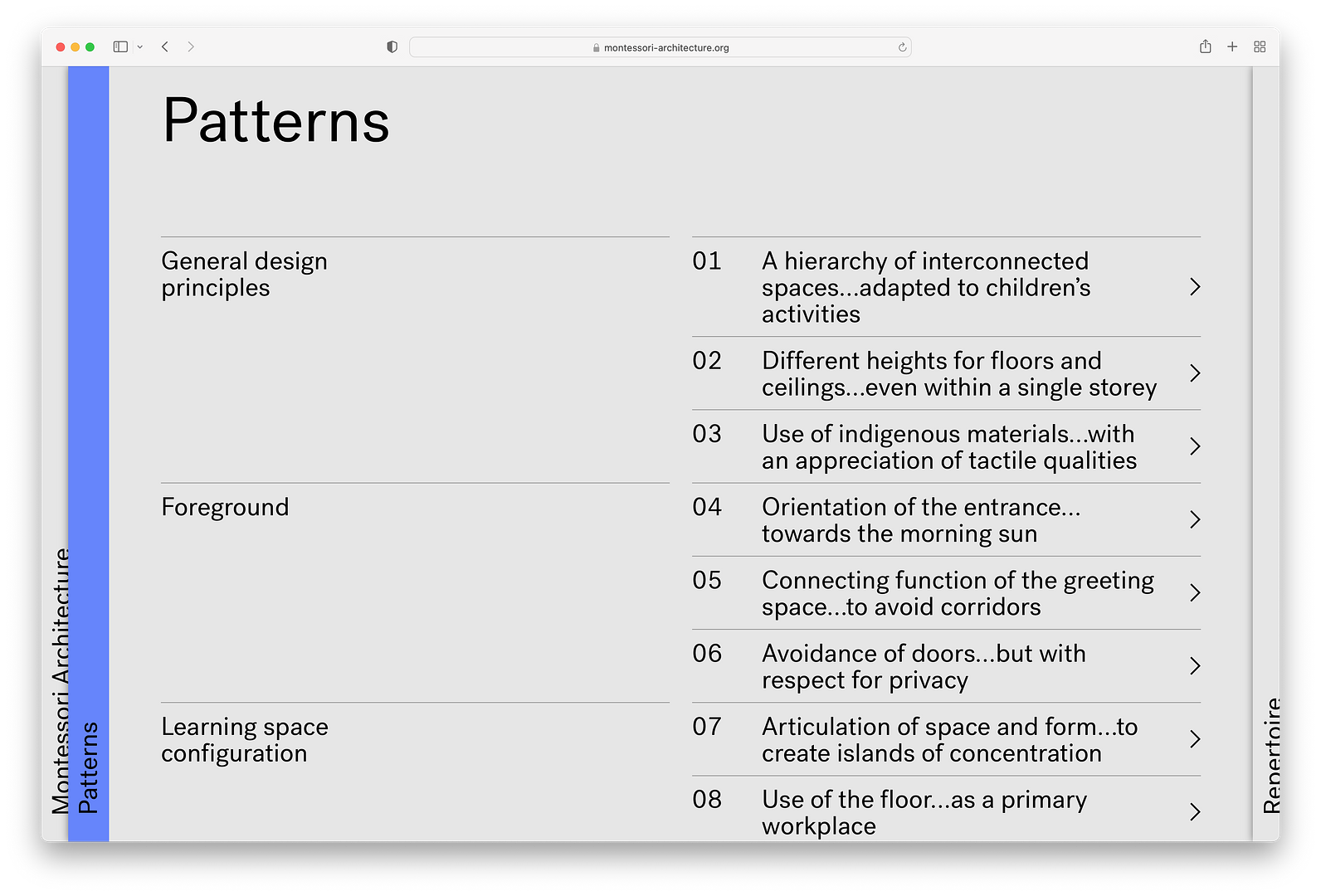
But if we go all the way back to Issue № 2 (!), I shared an article about Multisensory perception and architecture that’s also worth revisiting.
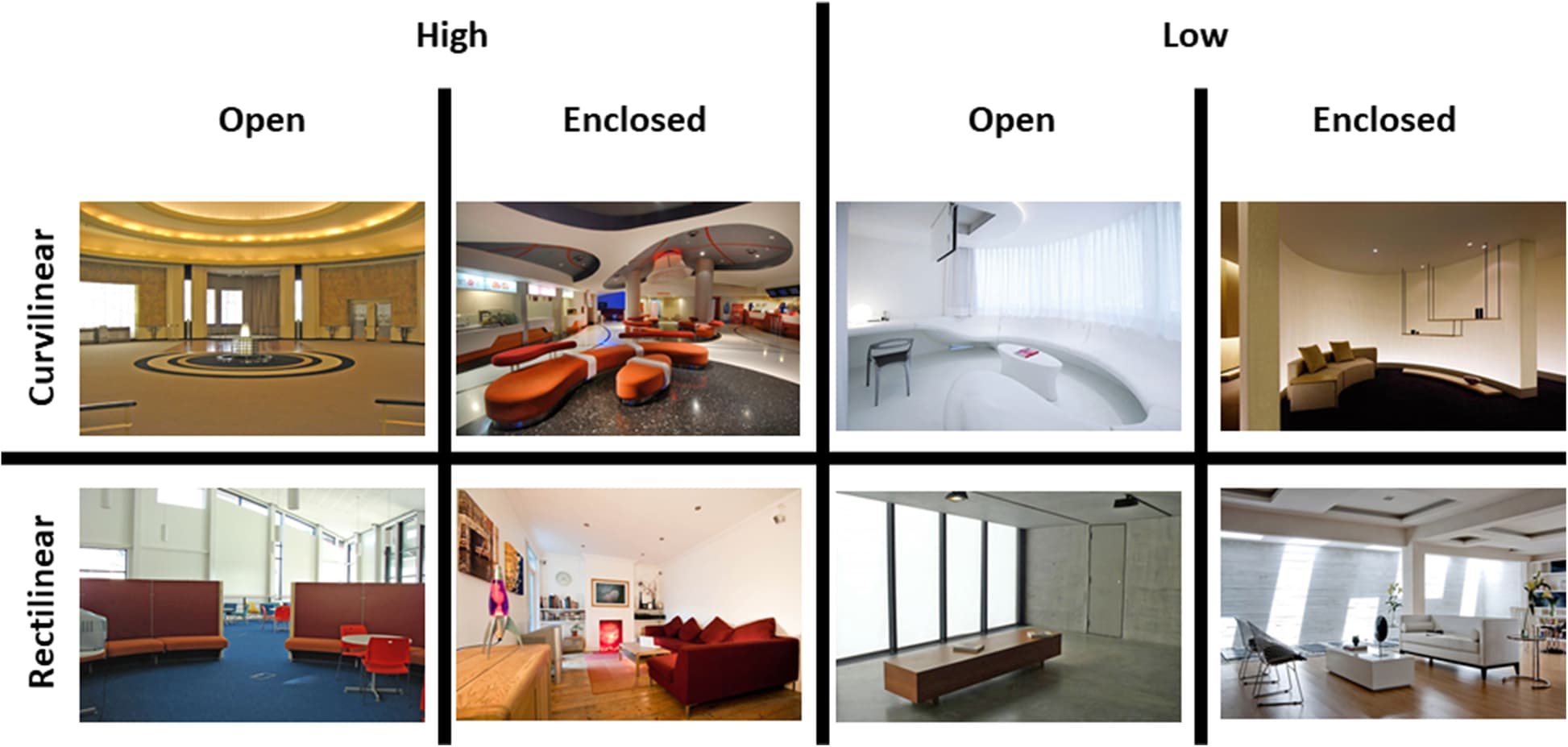
And then there’s the socially-focused posts about creating more communal spaces. “How to turn your Neighborhood into a Village” (Issue № 58) and Eco-ing Seattle (Issue № 75).
...
And… that's 10 themes. Are we done?
Ahem, no. I lied.
There are 11 themes in this special edition, not 10. (Hey, it’s my newsletter.)
THEME 11: New ‘Visual Primitives’
As a Visual SenseMaker, I’m always on the lookout for new visual ‘primitives’, that is, those fundamental shapes and patterns that can be used in any number of ways (think Bulls-eyes diagrams, 2x2 matrices, and continuums). In the course of publishing this newsletter, I shared two such ‘novel’ patterns:
While the content of what I shared back in Issue № 25 was about “Seriousness and playfulness,” it was this visual that stuck with me:
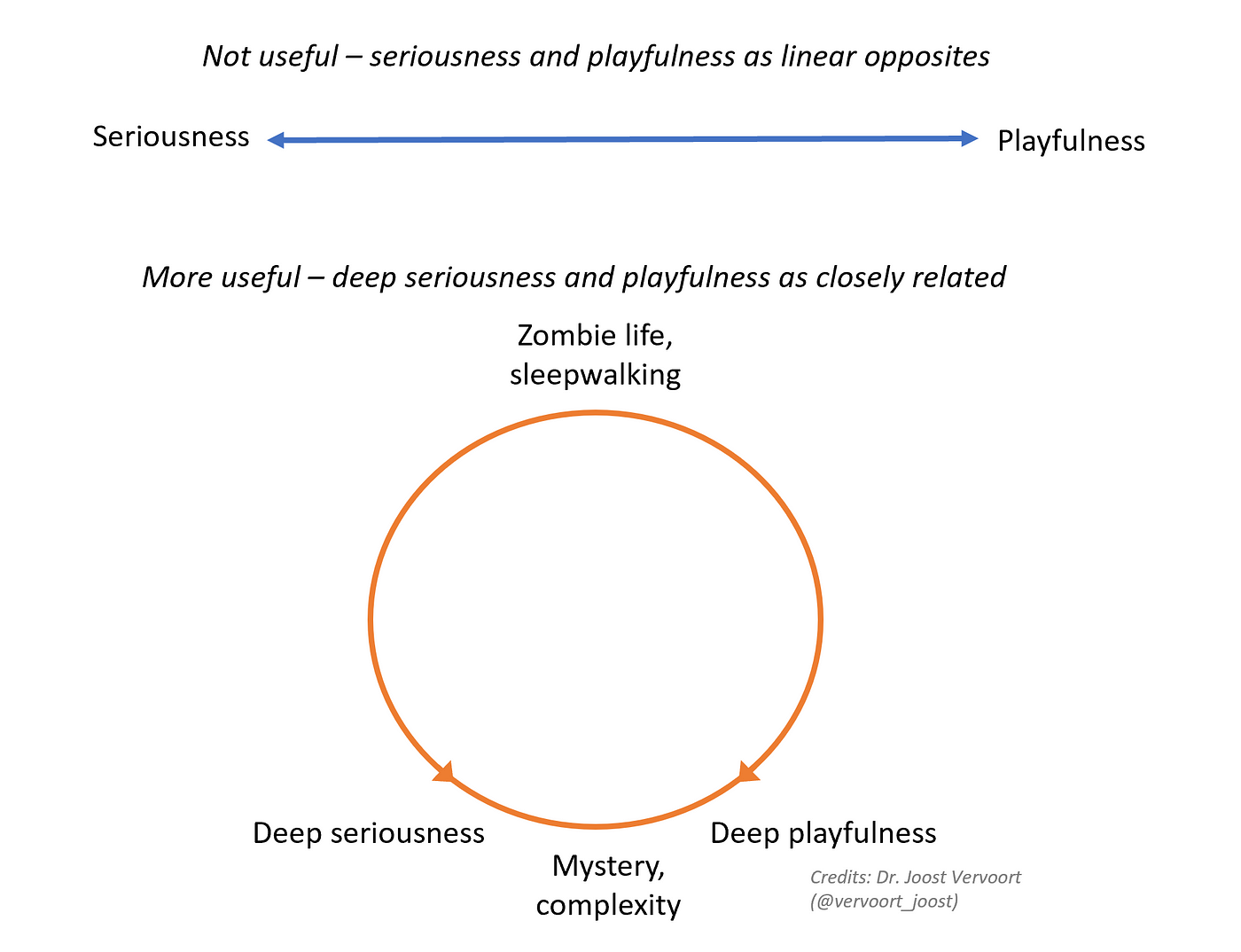
The idea that two ends of a spectrum don’t always mean extreme ends, but could actually come back to converge and align in some new way… Very cool.
If you were to ask me what my favorite shape is at the moment, my answer might surprise you. Not hexagons (despite devoting an entire issue to hexagon shaped playing cards). Rather, it’s… Triangles! Yes, I’m fascinated by various uses of the triangle shape. I’ve seen this simple shape used in some really interesting ways, including this infographic explaining the Three Components of Love (Issue № 68) and how the edges can be altered to represent 8 kinds of love. Nice.

...
And… THAT is a look back at highlights from the past 99 issues of the Thinking Things newsletter.
A Look Ahead…
Now that we’ve gotten through the clip show portion of this newsletter, let’s take a look at what’s ahead!
Actually, let’s not.
This special edition is already long enough, as is. I’ll save my fretting and musing about the future of this thinking Things newsletter for some other time (You’re welcome!).
I do have lots of thoughts, but… I feel this image captures the one thing I’m certain of, whenever I look out at what’s next… 😉

Until the next issue… find the joy in all you do!


